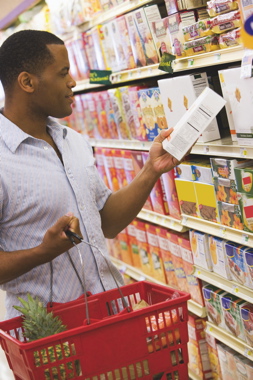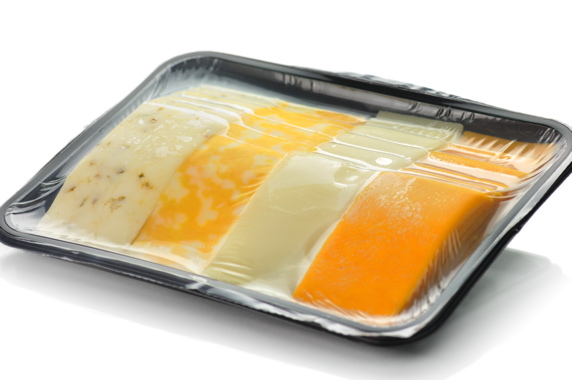
Packaging and its influence on shelf life
By Carol Zweep, manager of packaging and food labeling services for NSF-GFTC
Food Safety Canadian Food Inspection Agency Carol Zweep CFIA NSF-GFTC packaging shelf life shelflifeA White Paper from NSF-GFTC on how packaging can affect the range of shelf life a product achieves.
Consumers expect to purchase high-quality, fresh food. Manufacturers are challenged with determining and maximizing shelf life of food products that are exposed to varying conditions in the supply chain. Packaging is an important consideration in the shelf life of foods.
Definition of Shelf Life
What is shelf life? In Canada, the Canadian Food Inspection Agency (CFIA) defines shelf life, sometimes also called durable life, as “the period, commencing on the day on which a prepackaged product is packaged for retail sale, during which the product, when it is stored under conditions appropriate to that product, will retain, without any appreciable deterioration, its normal wholesomeness, palatability, nutritional value and any other qualities claimed for it by the manufacturer.”
Factors Affecting Shelf Life
Understanding the needs of the food is critical in selecting the appropriate package to maximize shelf life. What is the mode of deterioration? For perishable, chilled products the function of the package is to contain the product but a barrier package is not required since microbial or enzyme activity is the mode of spoilage for these products. For shelf stable products, the barrier of the package can affect the shelf life. For example, moisture absorption for a cracker will affect the crispness of the product and a moisture barrier is required. If the product has a large fat component (e.g. potato chips), fat oxidation affects the shelf life and an oxygen barrier is required. For ground coffee, it is important to keep the aromatic and volatile components within the package. Light protection may also be required. Without light protection, milk is susceptible to vitamin degradation and off-taste due to light-induced oxidation. Techniques such as modified atmosphere packaging and use of active packaging (such as ethylene absorbers) extend shelf life of perishable products.

Packaging is an important factor in the shelf life of food, but food characteristics or intrinsic factors also influence shelf life:
- Initial quality – For perishable food, the initial microbial load will influence the shelf life. Using ingredients that have already started to deteriorate (e.g. old oil) or over processing can result in loss of texture or nutrients (e.g. vitamin C);
- Inherent nature of the product – Fresh or perishable foods have an inherently shorter shelf life than shelf stable foods. The low water activity of products such as rice makes it an inherently shelf stable food;
- Product formulation – The addition of preservatives or anti-oxidants can extend the shelf of the product. Formulation changes such as replacing the type of acid, removing nitrates from a processed meat and reducing the amount of added salt can change the shelf life of the product.
Packaging is an external or extrinsic factor that affects shelf life. Other extrinsic factors include:
- Processing methods – Thermal processing will reduce (e.g. pasteurization) or eliminate (e.g. sterilization) microbes and extend the shelf life of product. Other gentle processing techniques such as high pressure processing can also be used to reduce initial microbial levels;
- Transportation and storage conditions – Exposure of the product to variable temperatures and relative humidity in the supply chain (including the retail environment) can affect the shelf life of foods. For refrigerated products, higher than optimal temperature storage can accelerate microbial growth. Oxidation reactions will also be accelerated by higher temperature exposure, thus shortening the shelf life of products;
- Consumer handling – After purchase, transfer of food from the store to home can result in higher temperature exposure. Consumer refrigerators can also be at higher than optimal storage temperatures. Once the package is opened, the shelf life date assigned by the food manufacturer is no longer applicable.
 Summary
Summary
It is important to understand the mode of food deterioration and sensitivities of the food in order to select the appropriate packaging to maximize the product’s shelf life. Other factors such as initial quality, product formulation, processing and storage conditions also influence a product’s shelf life. Physical protection of the product with appropriate primary and secondary packaging and package cost are also important considerations during the package design process.
Carol Zweep is the manager, packaging & food labeling, consulting & technical services with the NSF-GFTC. Carol has experience in quality assurance, testing laboratories and R&D in the packaging field. She is knowledgeable in plastic packaging testing, shelf-life evaluation and has provided training in those areas. Her unique background allows her to help both packaging companies and food and beverage processors by recommending suitable packaging, trouble-shooting packaging issues, performing shelf-life studies and consulting in sustainable packaging options. She is a board member for IOPP Ontario (Institute of Packaging Professionals), and a corporate member of PAC (The Packaging Association). Contact via e-mail at czweep@nsf.org.
Images courtesy of NSF-GFTC.
Advertisement

